Potřebujeme váš souhlas k využití jednotlivých dat, aby se vám mimo jiné mohly ukazovat informace týkající se vašich zájmů. Souhlas udělíte kliknutím na tlačítko „OK“.
ASTM E1725-14
Standard Test Methods for Fire Tests of Fire-Resistive Barrier Systems for Electrical System Components
Automaticky přeložený název:
Standardní zkušební metody pro požární zkoušky Hasičského odporový zábranné systémy pro elektrický systém Komponenty
NORMA vydána dne 1.7.2014
Informace o normě:
Označení normy: ASTM E1725-14
Poznámka: NEPLATNÁ
Datum vydání normy: 1.7.2014
Kód zboží: NS-42786
Počet stran: 11
Přibližná hmotnost: 33 g (0.07 liber)
Země: Americká technická norma
Kategorie: Technické normy ASTM
Kategorie - podobné normy:
Zápalnost a hořlavost materiálů a výrobků
Elektrotechnika všeobecně
Anotace textu normy ASTM E1725-14 :
Keywords:
air drop, cable tray, conduit, electrical system components, fire resistance rating, fire-resistive barrier systems, fire-test-response method, junction box, open run cables, pull box, raceway, thermal transmission, ICS Number Code 13.220.40 (Ignitability and burning behaviour of materials and products), 29.020 (Electrical engineering in general)
Doplňující informace
| Significance and Use | ||||
|
4.1 These fire-test-response test methods evaluate, under the specified test conditions, the ability of a fire-resistive barrier system to inhibit thermal transmission to the electrical system component within. 4.2 In these procedures, the specimens are subjected to one or more specific sets of laboratory test conditions. If different test conditions are substituted or the end-use conditions are changed, it is not always possible by or from these test methods to predict changes in the fire test response characteristics measured. Therefore, the results are valid only for the fire test exposure conditions described in these procedures. 4.3 These test methods provide a measurement of the transmission of heat to the electrical system components within the barrier system. 4.4 These test methods provide qualification of a fireresistive barrier system as one element of an electrical system designed to maintain continuous operation of critical functions and processes for a specific fire resistance rating. 4.4.1 In addition to the temperature data provided by these test methods, numerous other factors, such as referenced in 1.4 shall be considered in specifying such a system. |
||||
| 1. Scope | ||||
|
1.1 These test methods cover fire-test-response. 1.2 These fire-test-response test methods provide information on the temperatures recorded on the electrical system component within a fire-resistive barrier system during the period of exposure. 1.3 This standard is used to measure and describe the response of materials, products, or assemblies to heat and flame under controlled conditions, but does not by itself incorporate all factors required for fire hazard or fire risk assessment of the materials, products, or assemblies under actual fire conditions. 1.4 Potentially important factors and fire characteristics not addressed by these test methods include, but are not limited to: 1.4.1 The performance of the fire-resistive barrier system constructed with components other than those tested. 1.4.2 An evaluation of the functionality of the electrical system within the fire-resistive barrier system. 1.4.3 An evaluation of the ampacity of the electrical system within the fire-resistive barrier system. 1.4.4 An evaluation of the smoke, toxic gases, corrosivity, or other products of heating. 1.4.5 A measurement of the flame spread characteristics over the surface of the fire-resistive barrier system. 1.4.6 An evaluation of through-penetration sealing methods. 1.4.7 Combustibility of materials in the fire-resistive barrier system or of the electrical system components. 1.4.8 The need for supports beyond those normally required. 1.4.9 Environmental conditions in the area of service. 1.5 The values stated in inch-pound units are to be regarded as standard. The values given in parentheses are mathematical conversions to SI units that are provided for information only and are not considered standard. 1.6 This standard does not purport to address all of the safety concerns, if any, associated with its use. It is the responsibility of the user of this standard to establish appropriate safety and health practices and determine the applicability of regulatory limitations prior to use. 1.7 Fire testing is inherently hazardous. Adequate safeguards for personnel and property shall be employed in conducting these tests. |
||||
| 2. Referenced Documents | ||||
|
Podobné normy:
Historická
1.7.2010
Historická
1.11.2013
Historická
15.6.2010
Historická
1.1.2013
Historická
1.1.2007
Historická
1.1.2010
Doporučujeme:
EviZak - všechny zákony včetně jejich evidence na jednom místě
Poskytování aktuálních informací o legislativních předpisech vyhlášených ve Sbírce zákonů od roku 1945.
Aktualizace 2x v měsíci !
Chcete vědět více informací? Podívejte se na tuto stránku.


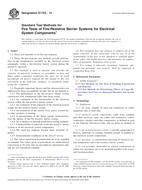
 ASTM D3801-10
ASTM D3801-10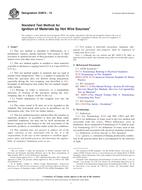 ASTM D3874-13
ASTM D3874-13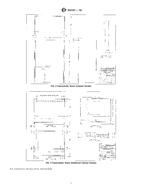 ASTM D4151-10
ASTM D4151-10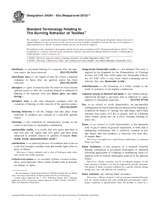 ASTM D4391-93a(2013)..
ASTM D4391-93a(2013)..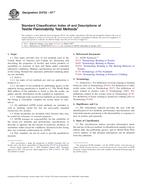 ASTM D4723-07e2
ASTM D4723-07e2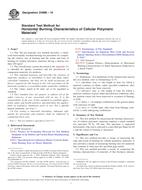 ASTM D4986-10
ASTM D4986-10
 Cookies
Cookies
